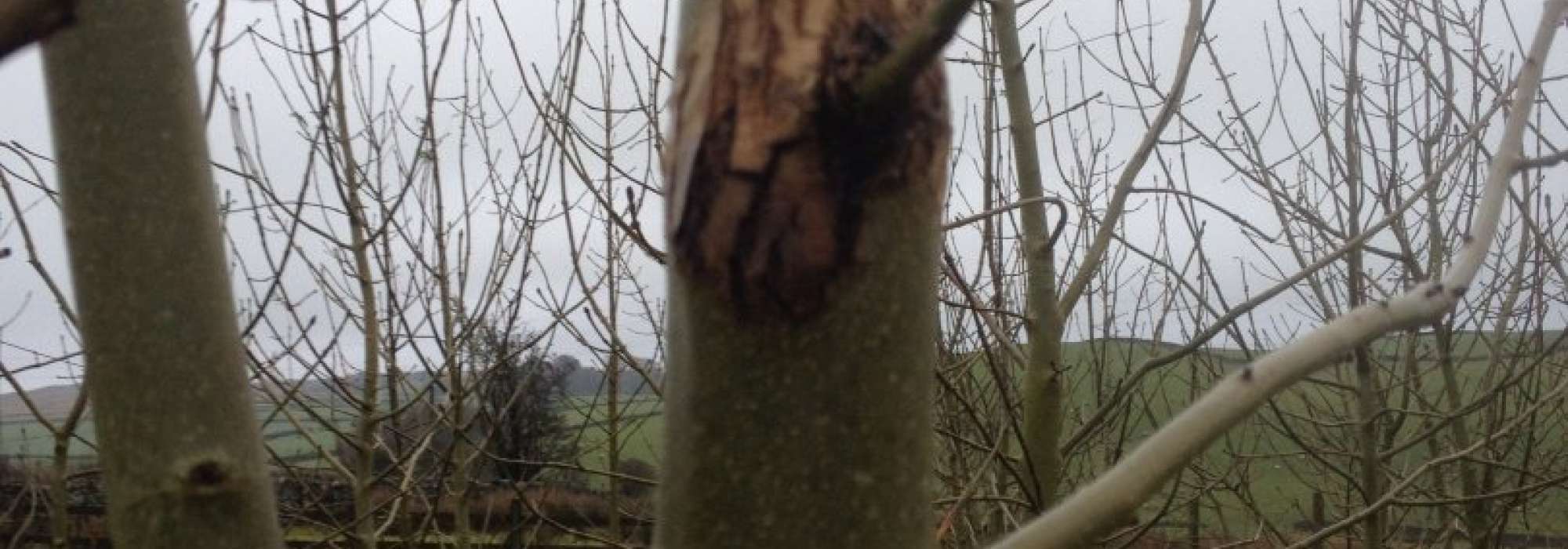Controlling Ash Dieback in Your Woodlands
Woodland expert, Will Livesey of H&H Land & Estates, discusses the threat of Ash Dieback and what landowners can do to protect their woodlands.
Hymenoscyphus fraxineus, more commonly known as Ash Dieback, is a fungus affecting Ash trees across Europe. Here, Will Livesey, Woodland and Environmental Advisor for H&H Land & Estates at Kendal, gives explanation into the disease and what landowners can do to reduce the threat to their own woodlands.
“Native to eastern Asia, Ash Dieback has a particular impact upon Common Ash (Fraxineus excelsior) which is due to the higher proportion of Ash trees throughout our woodlands and the wider landscape. Ash trees make up 12% of broadleaved woodland in the UK with an estimated 126 million ash trees within woodlands, and up to a further 60 million in non-woodland areas.
“Coupled with threats from other avenues such as honey Fungus (Armillaria) the future of Ash in the UK is bleak, though not without hope. The estimated fatality rate is approaching 80% and so it’s important woodland owners and managers are aware of the disease; the signs to look out for and what they can do to protect their Ash trees.
“Ash Dieback enters the trees through the leaves and the fungus grows internally throughout the tree. Essentially, this girdles the tree and prevents the movement of water and nutrients. Infection can lead to leaf loss and dead branches throughout the crown of ash trees, and in areas of high infection, the fungus can lead to lesions at the base of the tree.
“By law, landowners have a duty under the Occupiers Liability Act 1957 to take reasonable steps to ensure that no one becomes injured by the trees on their land, or that they manage. In short, this means that if a tree or branch were to fall and cause damage to a person or property, the landowner may be liable. This is generally proven where the landowner has been negligent, for example if the tree was unsafe due to disease or damage.
“As such, where Ash trees are infected, and especially those in proximity to areas of high public use, present a significant potential liability to an owner without careful consideration and management. Where required, further site investigations should be carried out, so it is always a good idea to utilise the services of a competent and professional forester.
“Though the disease can lead to a significant degradation in the quality of timber, for hurley sticks and milled timber, there remains a sizeable market for Ash in firewood. However, if infected trees are left for a considerable time, this can lead to poorer quality firewood, and a chip-wood/biomass product with an elevated level of ‘fines’ (dust due to the wood being pulverised when chipped rather than the chipper being able to make clean cuts).
“In its early stages, there is a possibility for interventions to be undertaken which can often yield to a satisfactory return. However, as the disease progresses, the potential range in products able to be recovered from the timber decreases significantly. Coupled with the increasing instability of the trees themselves, this can pose significant safety issues and associated costs regarding the felling, often drastically exceeding the monetary return.
“Another approach can be felling to minimise risk an reduce exposure to liability. This may not be a commercial endeavour of its own, but as part of a wider plan to reduce exposure and uncertainty.
“Regardless of the direction you choose to take, it is important to bear in mind that there is a multitude of restrictions and rules on the felling of trees, aside from just acquiring a felling licence. If you have a Tree Protection Order (TPO), or are within a Conservation Area, these also require engagement with the local authority before any felling can take place.
“Whilst there is no funding to contribute towards the cost of any felling operations, the Woodland tree health restoration grant contributes funding towards the cost of restocking following a felling operation. In short, with an adequate and proportional approach to risk and liability, it is possible to implement a woodland management plan which delicately balances the environmental and economic objectives.”
For any further advice on woodland management or Ash Dieback in particular, contact Will on 01539 7213745 or email [email protected].
